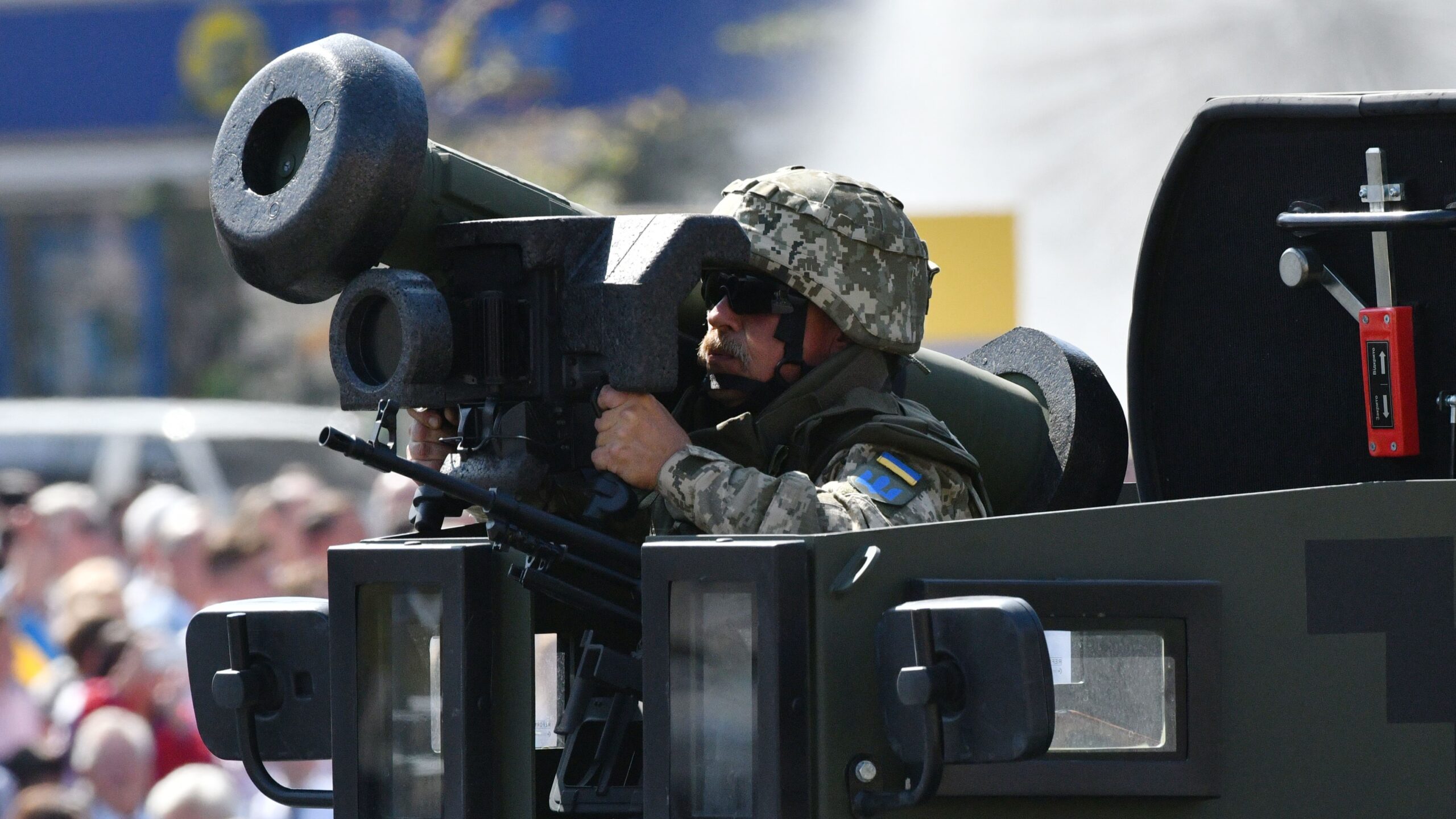
A Ukrainian serviceman rides atop of an APC with Javelin anti-tank missiles during a military parade in Kiev on August 24, 2018. (Genya Savilov/AFP via Getty Images)
AUSA 2022 — US arms sales to allies and partners bounced back with a total of about $50 billion in sales cases cleared in fiscal 2022, a big jump from the total of about $35 billion last year.
The boost to Foreign Military Sales deals approved by the State Department — roughly $15 billion over FY21’s totals — brings FY22 in line with annual cleared sales from before the COVID-19 pandemic, said Defense Security Cooperation Agency director James Hursch, who announced the total today at the Association for the US Army conference.
“I would say that we have enjoyed a rebound in arm sales,” he said. “I think that there will, over the next three years or so … be continuing increases. I’m not sure how steep the slope will be.”
Because the fiscal year ended on Sept. 30, Hursch was not able to provide a detailed break down of the $50 billion figure, which includes Foreign Military Sales, Foreign Military Financing and other government authorities.
Russia’s invasion of Ukraine and the ongoing conflict has helped spur a greater demand for US weapons, particularly from European nations who find themselves needing to replenish their own munitions stockpiles or have begun rethinking their own defense needs, Hursch said. “They are drawing lessons from the conflict that we see today about the kinds of systems they need to have.”
However, two other major factors also likely influenced sales. First, similar to the increased interest from European countries, there has been a wave of sales from partners in the Indo-Pacific who recognize the threat of China and are moving to recapitalize their legacy systems, Hursch said.
Also, the end of lockdowns associated with the COVID-19 pandemic has allowed US officials to meet more regularly in person with their international counterparts, potentially paving the way for arms deals, he said.
While the DSCA figure is important for understanding arms sale trends, it doesn’t tell the whole story. The sales amount cleared by the State Department and DSCA doesn’t always reflect the actual value of a deal once it is negotiated by a country and a defense contractor later in the process. Also, sometimes the State Department will approve arms sales of equipment that has not been formally requested by a country in order to speed up a potential sale down the road.
For instance, it cleared $85 billion of sales in FY20 — a huge number that dwarfed the $55 billion logged in in FY19 and $56 billion in FY18. However, the FY20 sales figure included two US fighter offerings for a Swiss competition that was still ongoing at the time. Ultimately, Switzerland chose the F-35, leaving the Super Hornet deal on the table despite figuring into year-end totals.
Although Hursch said he believes arms sales will continue to increase over the next couple of years, he offered an additional caveat: FY22’s total includes “some fairly large F-35 sales,” which tend to be high in value and drive up the annual total.























